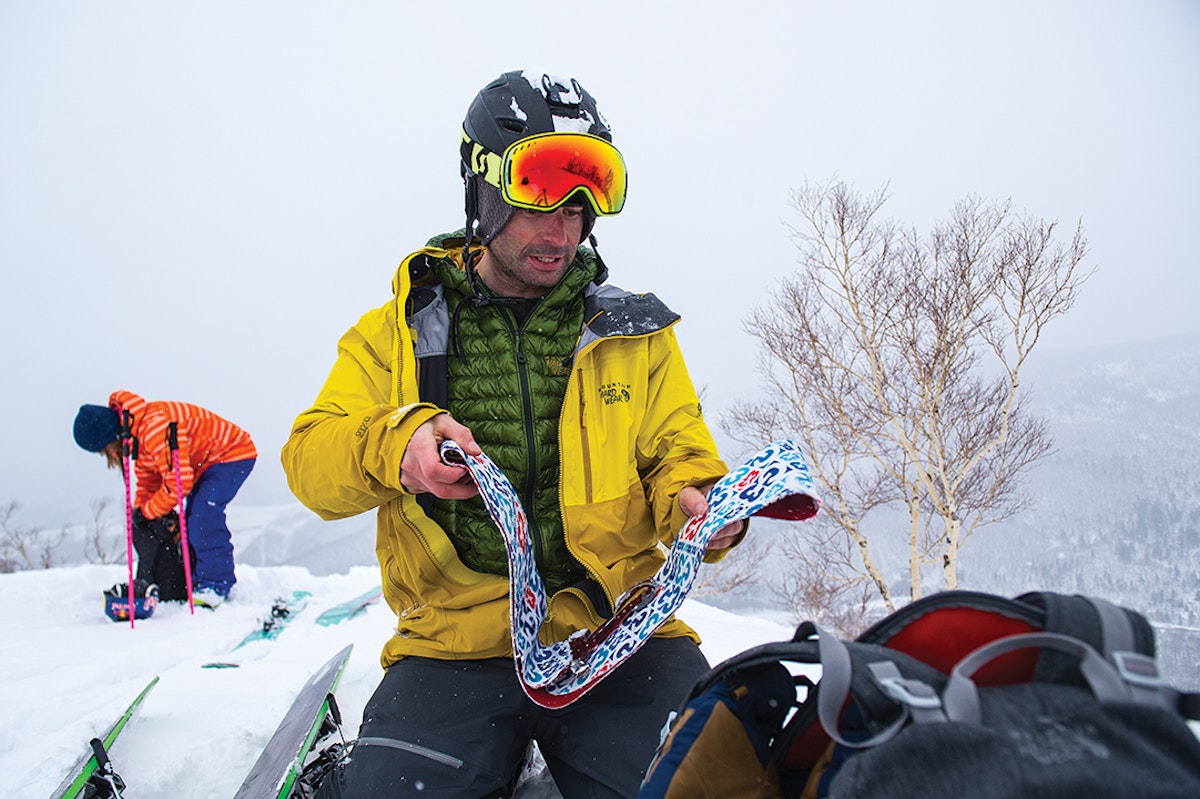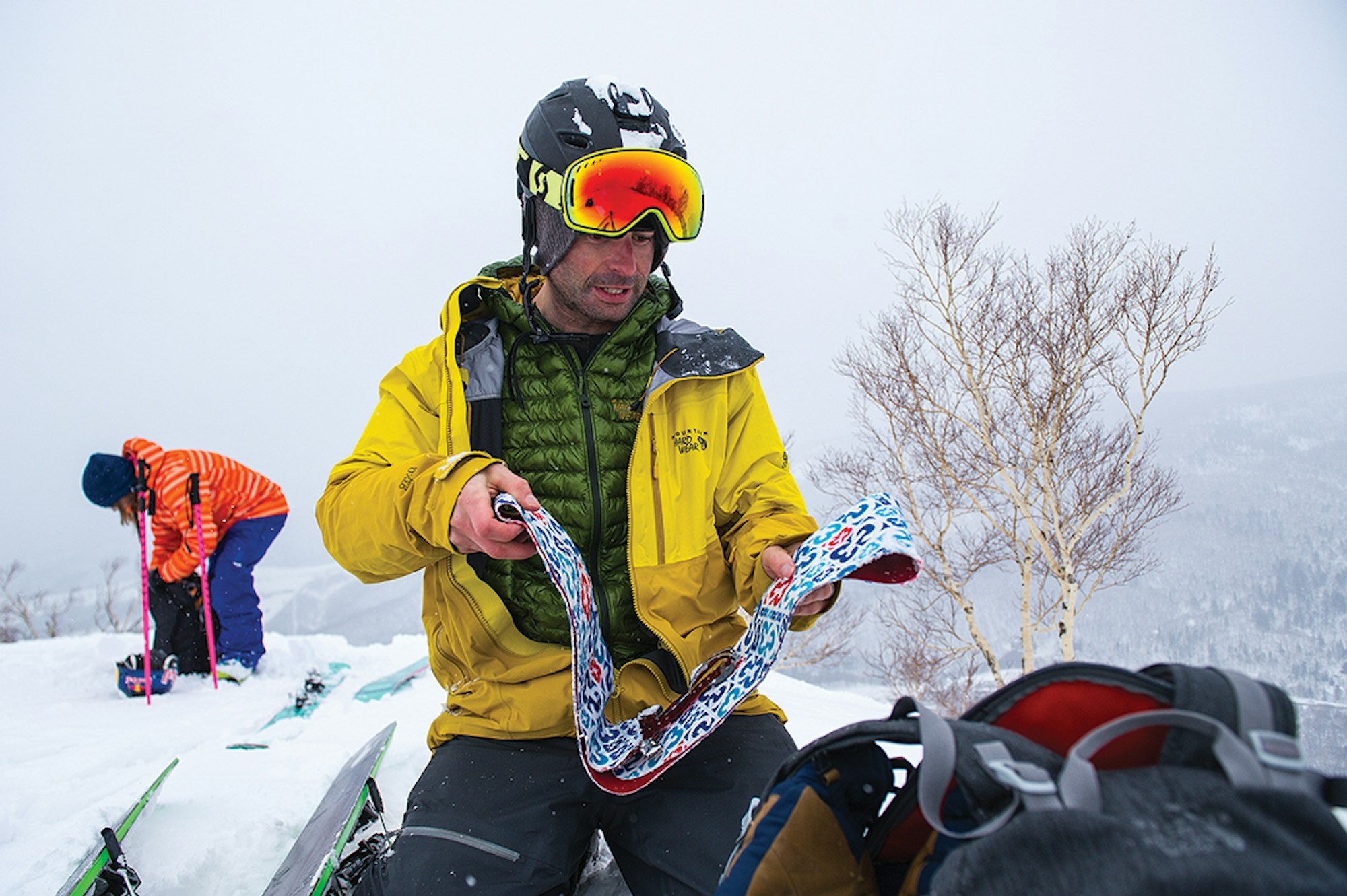Featured Image: Eric Berger | Location: Kiroro, Japan
10 must-do items for the responsible mountain traveler, with James Heim
01. “Sign up for an avy course. I am always amazed by how many people ski the backcountry with no proper gear nor training. Before even thinking of heading out there, sign up for an avy 1 course. And you should always ski with folks who have taken a course, as well.”
02. “Know first aid. You should now be equipped with some great avalanche skills and feel confident you can dig your buddies out if disaster strikes. But what happens when they aren’t breathing? Not all avy courses come with a first aid course. Take the time to learn the basics, at least. Fortunately, I have never had to use any first aid in the field, but it’s reassuring to know that I could if called upon.”
03. “Pack a first aid kit. Small kits can really help with a variety of injuries. I tailor mine to what I need the most depending on the trip. You probably don’t need AfterBite while camping on a glacier. Even for quick tours, I always carry at least bandages, antiseptic wipes, moleskin and tape.”
04. “Gear up for a crevasse rescue. Following a skin track through a glacier doesn’t mean you’re safe. Likely the team that laid the track had the right gear for a rescue. Glacier skills and crevasse rescue courses are quite fun and will help you to expand your backcountry playground.”
05. “Power your cell phones. Relying solely on a phone for safety has its problems. We are often so intent on posting that next Instabanger that a phone can easily eat through a battery in the cold. If a cell is your tool for GPS, maps, rescue, camera and music, buy an extra battery and throw it in your bag.”
06. Snag a sat phone. For larger off-grid missions, satellite phones are a must. They are easy to rent, and you can split the cost with your buddies. The Spot is another useful emergency rescue device if you can’t get your hands on a sat phone. This GPS device notifies friends and family of your status, e.g., if you’re OK but running late, you can let them know. In case of an emergency, you can send an SOS message, which will be forwarded to the nearest search and rescue team.”
07. “Think overnight. Put together a little collection of some essentials that could help you through an accidental overnighter in the snow. It gets dark and cold quickly out there, so pack some instant heaters, a couple lighters, a small candle, an emergency blanket, a headlamp with extra batteries and maybe a couple energy bars and gels.”
08. “Carry tools and spare parts to get you home. Tools and spare parts are essential and different for every skier. Your partners may carry kits, but that doesn’t mean their utensils will work for your gear. Know your gear and what you’ll need to fix or tighten anything and everything. If any gear has a tendency to break—like boot buckles—bring spares. My own tool kit includes a Leatherman Surge with all the screwdriver bits I might need, duct tape, a few feet of chicken wire (really useful), and if I am going for more than a day, spare buckles with T-nuts.”
09. “Organize. Make specific stuff sacks where each group of gear lives for the whole season. You won’t need everything every day. But this way, it’s really easy to have all your gear readily available for any mission.”
10. “Practice, practice, practice. You can learn these skills in a matter of days, but they can be easily forgotten. I hear a lot of people say they “took their avy course six years ago and haven’t practiced since.” Good luck with a rescue when shit hits the fan, bud.”



![[GIVEAWAY] Win a Head-to-Toe Ski Setup from IFSA](https://www.datocms-assets.com/163516/1765920344-ifsa.jpg?w=200&h=200&fit=crop)


![[GIVEAWAY] Win a Legendary Ski Trip with Icelantic's Road to the Rocks](https://www.datocms-assets.com/163516/1765233064-r2r26_freeskier_leaderboard1.jpg?auto=format&w=400&h=300&fit=crop&crop=faces,entropy)




![[GIVEAWAY] Win a Head-to-Toe Ski Setup from IFSA](https://www.datocms-assets.com/163516/1765920344-ifsa.jpg?auto=format&w=400&h=300&fit=crop&crop=faces,entropy)


